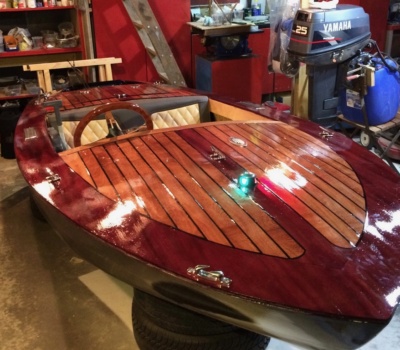Renovation of the Spanish motorboat Ducauto caribe.
“Cut in half, gutted and made according to my own concept. The work took four years as soon as I had some free time.
Fiberglass boat. I added some waterproof plywood for lockers, the rest of the products are all from Sea-Line:
epoxy putties, Lightprimer primer, polyurethane topcoat. Everything turned out great. “Tomasz Fras


Cosmetics Sea-Line use in Polish Army for cleaning and protect Sea Gun AM35 on „ORP

Mr. Wojciech Ceiślik, boatbuilder Glen-L Squirt: „I recommend Sea-Line products to everyone who builds and

„… It was not easy, hard job on knees with mask and glasses. Feeling like

„The holiday period ended and my yacht was left for 2 months in one of
Yes, you can paint the bottom of the boat with polyurethane paint due to its high mechanical strength. We recommend this solution when the boat is not launched for a long time and is not exposed to fouling.
If the scratches are not deep, then we can renew the scratched side by polishing with Sea-Line polishing pastes. Above the waterline, when the scratches are not deep, the surface can be repaired with a DRY FAST gel coat filler. Deep scratches should be filled with epoxy filler (selected depending on the requirements of the scratched surface), painted with a primer and then painted with topcoat.